Respect for Employees:Health and Safety initiatives


Health and Safety initiatives
The Toyo Seikan Group is actively engaged in health and safety initiatives to ensure that all stakeholders can work in a safe and healthy environment. This includes not only our employees but also external stakeholders, partner companies, and contractors.
Our safety initiatives are centered on the committees of each company. These include workplace safety patrols, prevention of common accidents, and hazard prediction activities, all of which are carried out continuously based on the activity plan.
In our health initiatives, we are focusing on the prevention of lifestyle-related diseases and occupational diseases, and the promotion of mental health measures, in accordance with the annual activity plan.
Furthermore, together with our partner companies and contractors, we are implementing safety initiatives and disaster prevention events at our workplaces. Through these initiatives, we aim to create a workplace environment where everyone can work with peace of mind.
Our Approach to Occupational Health and Safety
The Toyo Seikan Group works to ensure safety and health through the Toyo Seikan Group Guidelines of Behavior, aiming and working toward creating a workplace where everyone can work with peace of mind.
Each business company, based on labor agreements concluded with labor unions and rules of employment, strives to ensure and improve the safety and health of its employees and takes the necessary measures to provide a safe and comfortable workplace.
Occupational Health and Safety Management Systems of Group Companies
At each of the domestic group companies, the president appoints the head of health and safety management (a director or an operating officer), who appoints the chief managers for health and safety of individual business facilities. Each chief manager establishes a health and safety committee to build a system to manage health and safety in the facility.
The health and safety committees established at each base operate as organizations promoting safety and health management, and they hold health and safety committee meetings with labor and management once a month.
The committee is composed of the chief manager, safety managers, health managers, an industrial physician, and other members representing the company and the labor union in accordance with laws and regulations. Half of the members are nominated based on recommendations from the labor union. If a major safety and health issue or concern is identified, it is promptly reported to the chief manager, instructions for correction or countermeasures are given by the Health and Safety Committee Secretariat, improvements are made in cooperation with the relevant department, and the content is horizontally deployed to other bases.
Preventing Occupational Accidents
To prevent occupational accidents, the heads of health and safety management of the group companies individually formulate their annual plans to carry out the activities stated below.
As part of our safety activities, we hold a Health and Safety Committee meeting at each base every month, where we strive to reduce risks by implementing continuous and proactive activities, such as formulating policies suitable for the characteristics of the workplace, safety patrols, measures to prevent the recurrence of common disasters, and KY (hazard prediction) activities. In addition, we share information on safety, such as examples of industrial accidents and measures to prevent them, with our partner companies and promote safety activities in collaboration with them. As for our health activities, we are working on the prevention of lifestyle-related and occupational diseases and the promotion of mental health measures.
We also have procedures in place for hearing from employees about near-miss incidents, information about potential problems, and proposals for improvement.
Main activities in FY2022
Setting Target to Prevent Occupational Accidents and the Results
We aim for zero serious occupational accidents every year, as we achieved the target for fiscal 2020, 2021 and 2022. We continue with our efforts to maintain zero cases for fiscal 2023.
| Category | Period | Number of occurrences |
|---|---|---|
| Results | FY2020 (Apr. 2020–Mar. 2021) | 0 |
| FY2021 (Apr. 2021–Mar. 2022) | 0 | |
| FY2022 (Apr. 2022–Mar. 2023) | 0 | |
| Target | FY2023 (Apr. 2023–Mar. 2024) | 0 |
Frequency and severity of occupational accidents at major group companies
Frequency and Severity of Occupational Accidents
- The table can be scrolled left or right.
| Item | Scope of survey | FY2019*5 | FY2020 | FY2021 | FY2022 |
|---|---|---|---|---|---|
| Frequency rate*1 | Toyo Seikan Group Holdings and its domestic consolidated subsidiaries*3*6 | 0.36 | 1.37 | 1.29 | 1.72 |
| All industries surveyed*7 | 1.80 | 1.95 | 2.09 | 2.06 | |
| All manufacturing industry*7 | 1.20 | 1.21 | 1.31 | 1.25 | |
| Severity rate*2 | Toyo Seikan Group Holdings and its domestic consolidated subsidiaries*3*6 | 0.01 | 0.02 | 0.03 | 0.02 |
| All industries surveyed*7 | 0.09 | 0.09 | 0.09 | 0.09 | |
| All manufacturing industry*7 | 0.10 | 0.07 | 0.06 | 0.08 | |
| Coverage of data collection among all employees of the Group*4 | 44% | 72% | 71% | 69% | |
-
Frequency rate (how often incidents occurred) is indicated by the number of casualties per million work hours, calculated by the formula below:
(Number of casualties / Total hours worked) × 1,000,000 -
Severity rate (incident severity level) is indicated by the number of workdays lost per 1,000 work hours, calculated by the formula below:
(Total workdays lost / Total hours worked) x 1,000 -
Frequency and severity rates are the weighted averages of those of the following companies based on the numbers of their employees.
FY 2020 and 2021: Toyo Seikan Group Holdings and all its domestic consolidated subsidiaries
FY 2019: Toyo Seikan, Toyo Kohan, Tokan Kogyo, Nippon Closures, Toyo Glass, Mebius Packaging, Toyo Aerosol Industry,TOMATEC and Toyo Seikan Group Holdings
- The coverage ratio is based on the numbers of employees as of April 1 of each year.
- The data for Toyo Kohan, Toyo Glass and TOMATEC are on a calendar year basis since their fiscal-year based figures are currently not available, as we present the statistics for the first time in this report. The data collection may be changed to a fiscal year basis in the future report.
- The numbers of employees of Toyo Seikan, Nippon Closures, Toyo Glass and Mebius Packaging exclude temps from staffing agencies, except for the numbers of casualties and lost workdays of Toyo Seikan and Mebius Packaging, which are counted including temps.
- Source: The Ministry of Health, Labour and Welfare’s Survey on Industrial Accidents
Recipient of the Encouragement Award at the Fukuoka Labour Bureau Director-General’s Commendation for Health and Safety
On October 7, 2022, Nippon Tokan Package’s Fukuoka Plant was honored with the Encouragement Award at the 2022 Fukuoka Labour Bureau Director-General’s Commendation for Health and Safety, presented by the Fukuoka Labour Bureau of the Ministry of Health, Labour and Welfare. The award is bestowed upon workplaces that demonstrate exceptional standards and practices in health and safety of their employees and fostering a comfortable work environment. The Fukuoka Plant was particularly commended for its long-standing record of operating without any workplace accidents.
Moving forward, the company will continue to enhance its health and safety management systems, and further promote the creation of a more comfortable and safer work environment.
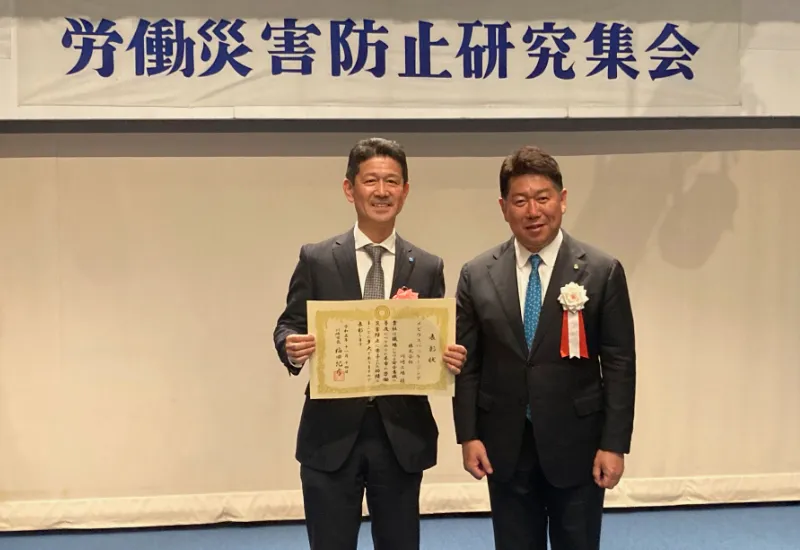
Received the Gold Award for Outstanding Safe Driving Workplace
On November 10, 2022, Tokan Logitech’s Atsugi Office was honored with the Gold Award for Outstanding Safe Driving Workplace, a recognition program sponsored by the Kanagawa Prefectural Police and the Japan Safe Driving Center. The award is bestowed upon business offices and that have demonstrated a commitment to safe driving and accident prevention, as evidenced by their flawless driving records.
Motivated by this recognition, our entire team will continue to prioritize safety, striving to maintain our record of zero accidents and zero violations.
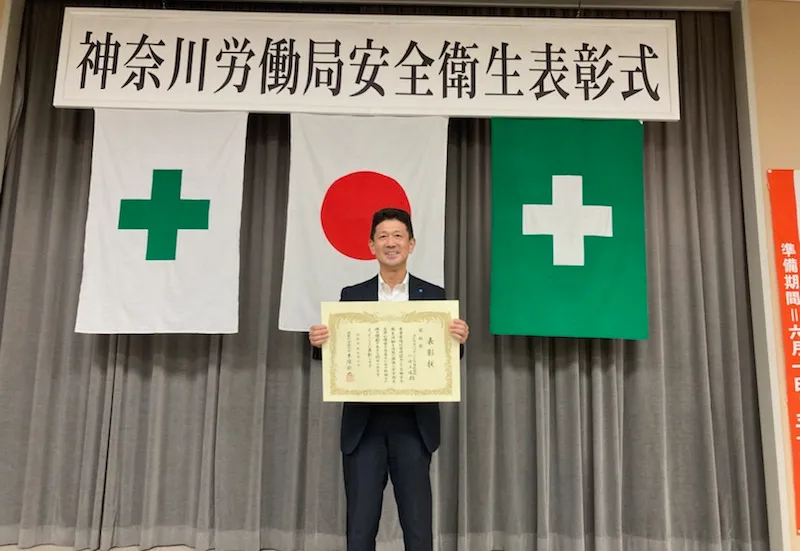
Commendation from Komaki City's Hazardous Materials Safety Association
A contract employee of TOMATEC's Komaki Plant was awarded a special commendation for his years of dedication by the Association for Safety of Hazardous Materials in Komaki City. The Komaki Plant also received a letter of appreciation from the Mayor of Komaki City for its contribution to the development of the association and raising awareness of safety management of hazardous materials.
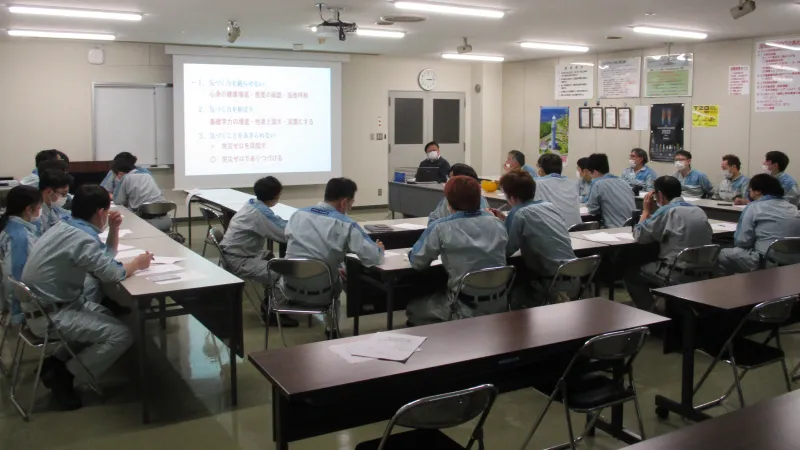
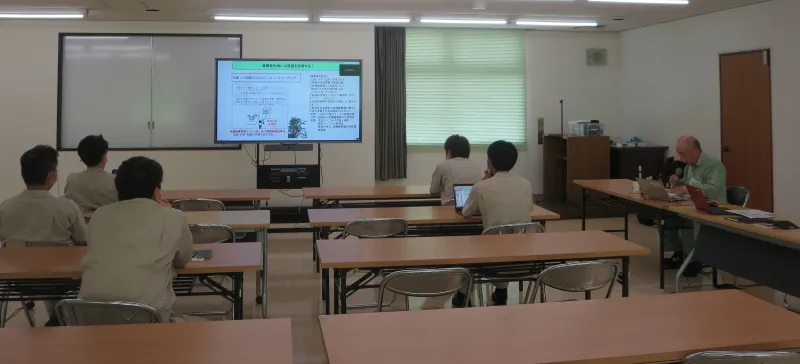

Health and Safety Training for New Employees
At TOMATEC, we conduct health and safety, and compliance training for our new employees through various programs such as initial orientation, on-site factory training, and follow-up sessions. These programs serve as opportunities for our employees to understand the history, products and systems of TOMATEC and the Toyo Seikan Group, as well as the values we uphold. We place particular emphasis on sharing case studies of occupational accidents and near-miss incidents to enhance our employees’ awareness and understanding of workplace safety.
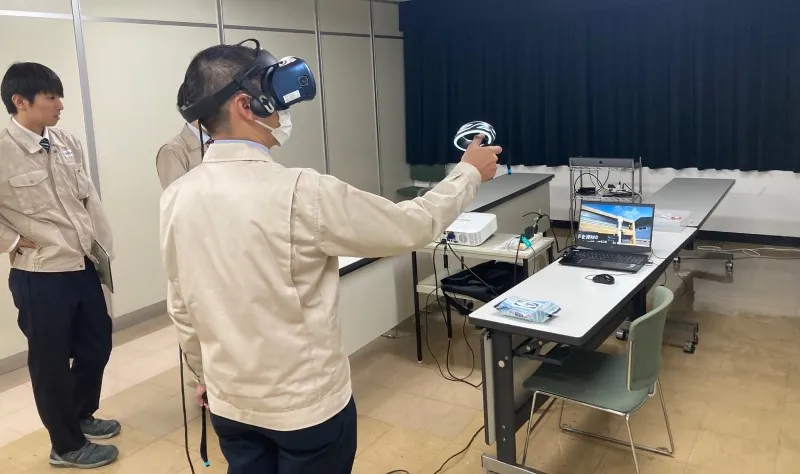
Promotion of Risk Assessment Activities
At Nippon Tokan Package, we determine the main theme for our annual health and safety activities and carry them out accordingly. The theme for fiscal 2022 was "Promoting adherence to workplace rules and risk assessment activities to eradicate work-related accidents and aim for intrinsic safety.” Learning from incidents that occurred in the previous fiscal year, we reviewed and added to our activity items and carried out our health and safety activities.
To strengthen the foundation of our health and safety activities, we initiated the internal deployment of risk assessment methods, and utilized a database to plan an annual cycle of education, operation, verification and review of workplace rules. We also implemented initiatives such as compliance with laws and hierarchical education.
In addition, as part of our ongoing health and safety activities, we conducted factory tours and efforts to improve the workplace, and held discussions on workplace issues and requests with the aim of revitalizing the Health and Safety Committee. In the case of work-related accidents, we ensure the sharing of case information, including information from other companies, and strive for thorough recurrence and continuous improvement.
For fiscal 2023, we are also planning initiatives to enhance physical strength, aiming for the safety and health of our employees.
Safety training using the "KYT 4-Round" method
At Toyo Seikan's Ishioka Plant, a safety training program is conducted using the KYT 4-Round* method. This training was attended by a total of 113 individuals, including 33 employees in their second or third year of employment, primarily from the manufacturing section, as well as 80 part-time and temporary workers. During the training, participants engaged in group discussion to identify potential hazards i in the workplace and to develop solutions and goals for each of the four stages of hazard control. This process helped to enhance safety awareness and promote a culture of accident-free operations.
* The KYT 4-Round method is a technique used in Japan for prediction training. KYT stands for "Kiken Yochi Training," which translates to “Hazard Prediction Training.” Participants form teams and collaborate to identify risk factors, and then establish solutions and goals in four stages: 1) understanding the current situation, 2) identifying the core issues, 3) establishing countermeasures, and 4) setting goals.
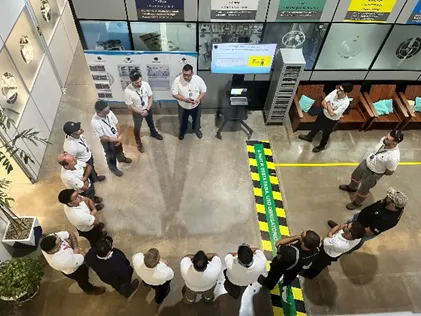
Implementation of Virtual Reality Safety Sensitization Training
At TOMATEC we have implemented safety sensitization training using virtual reality. This allows participants to simulate workplace accidents, thereby enhancing their awareness and sensitivity toward potential hazards. They were able to experience more realistic accidents and disasters, and reflect on their learnings. This innovation approach, which was experienced by employees from not only from the manufacturing department but also various other departments, is expected to contribute to more proactive health and safety initiatives within the company.
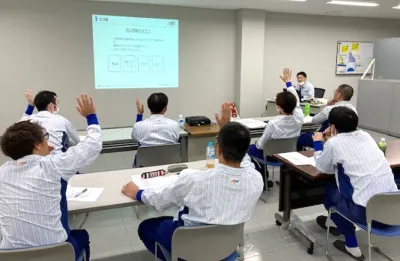
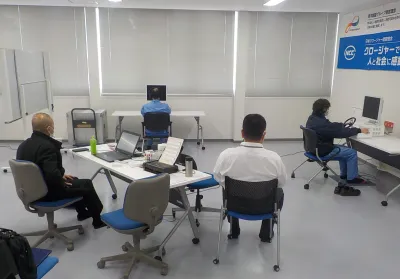
Measures against infectious diseases
The Group’s employees who are assigned to foreign bases and their accompanying family members are provided with medical checkups before leaving Japan. They are also given prior guidance on healthcare management that will be needed in their new locations and the information on global health issues, such as tuberculosis, HIV, viral hepatitis, and endemic malaria and dengue fever, as well as methods to prevent these diseases. We encourage employees who travel abroad to receive required vaccinations based on the recommendation of the Ministry of Health, Labour and Welfare.
By referring to the information from the Ministry of Foreign Affairs, the World Health Organization (WHO) and other relevant sources, we collect the latest information on outbreaks of infectious diseases overseas to take responsive action. In addition, using our intranet we provide contact information for healthcare support services and local medical providers to help employees working abroad maintain good health. Members working in China and Vietnam can also access the guide via the intranet on how to use medical support services available 24 hours.
Employees working in Japan receive a chest X-ray as part of an annual health checkup for early detection of tuberculosis.

